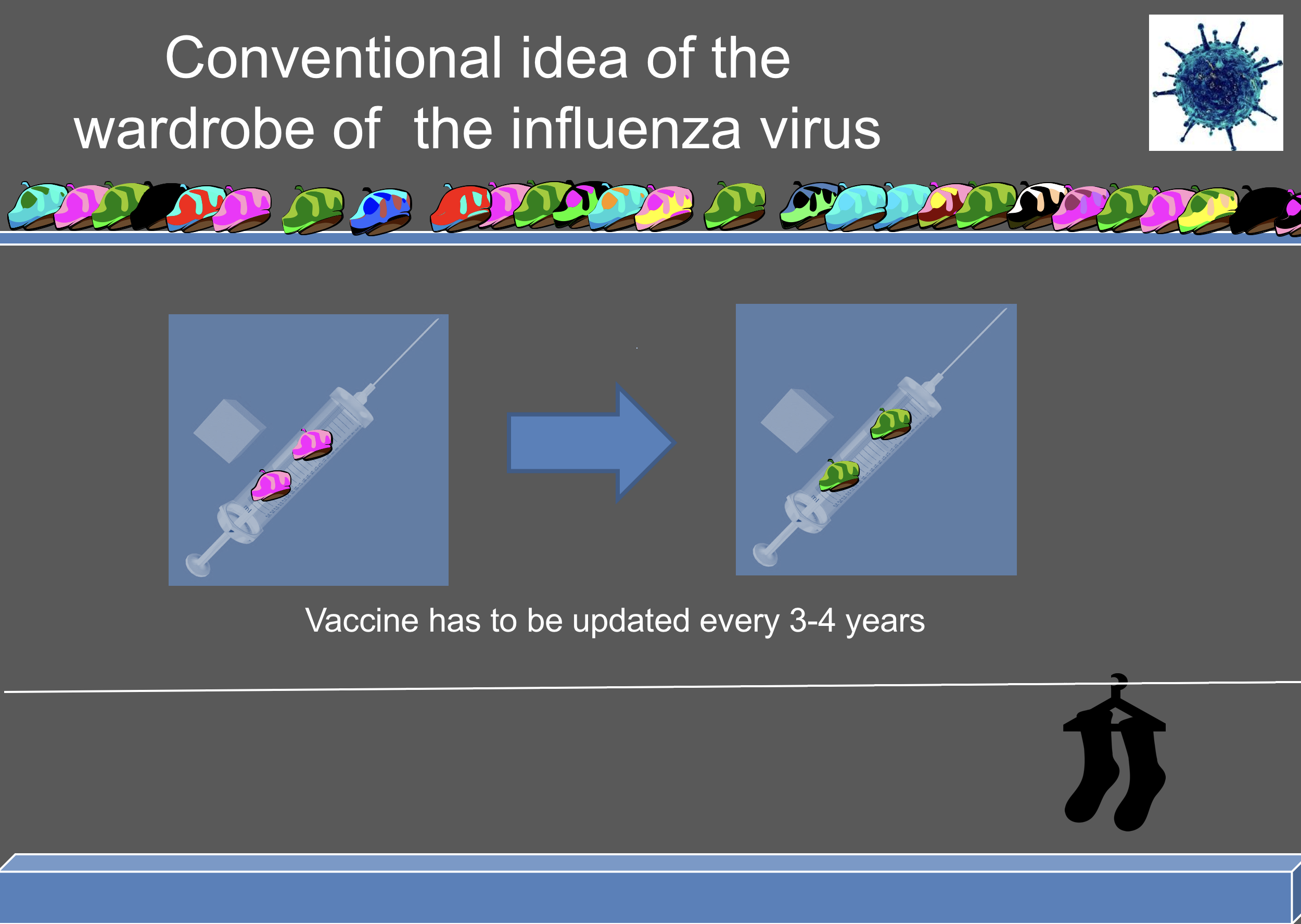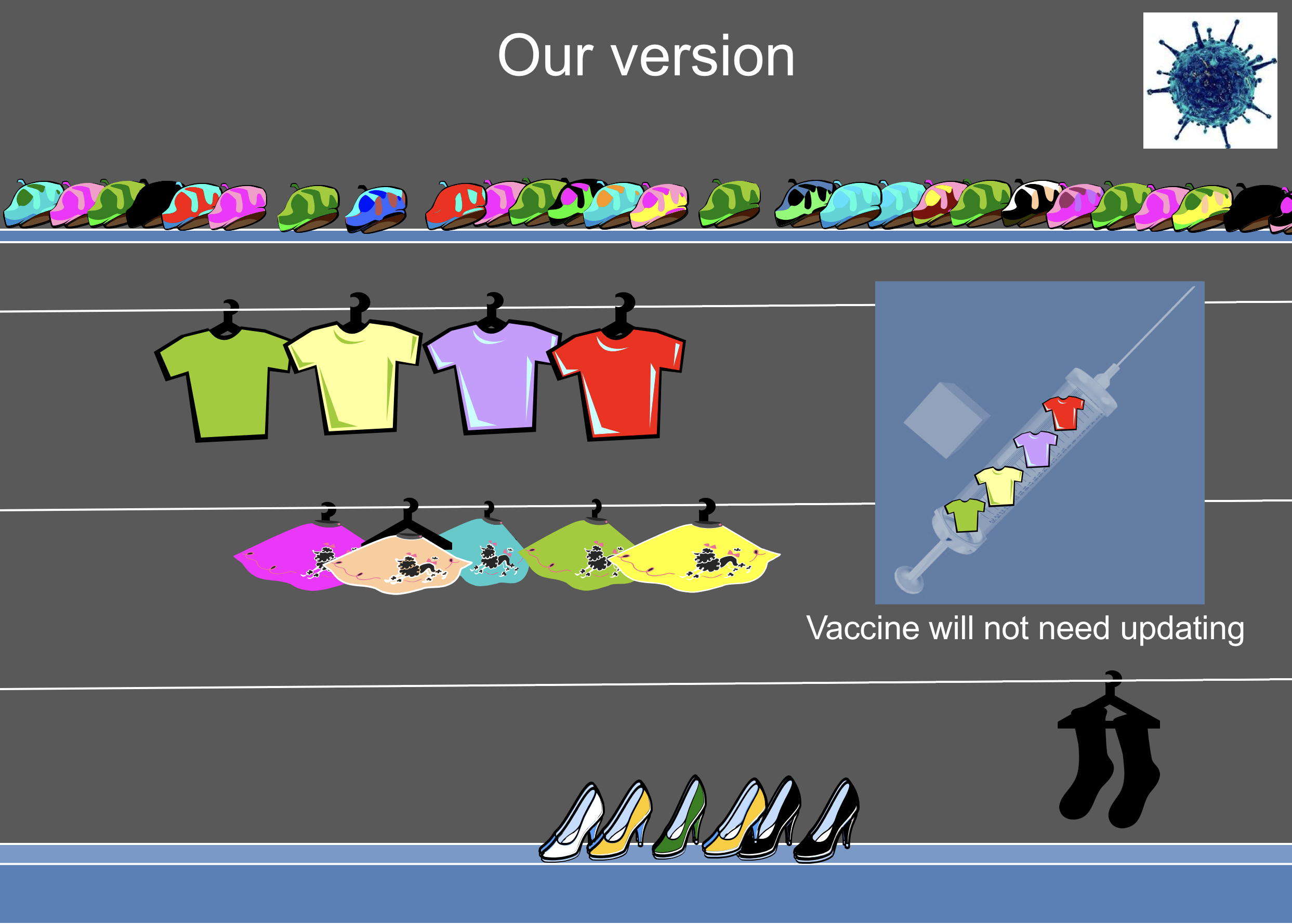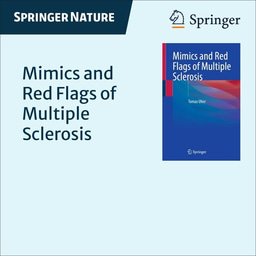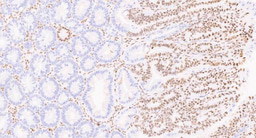Link to paper: https://www.nature.com/articles/s41467-018-06228-8
Why do we have perfectly good vaccines against some diseases like measles and not others? Why do vaccines against diseases like influenza require constant updating while others have remained the same for decades?
I like to give the answer using what I call my "wardrobe" analogy. The immune system does not usually perceive a pathogen in its entirety but rather by its parts. If we imagine that these parts constitute their garments, and that these garments can vary in colour, then the "wardrobe" of a pathogen can either be extremely colourful or completely monochromatic depending on the degree of structural and functional variation that is permitted within the parts presented to the immune system. Some pathogens (like measles) have a very monochromatic wardrobe, meaning that the parts presented to the immune system (which I shall henceforward refer to as 'epitopes') are not capable of any significant variation. As a result, when we become infected with measles, we develop a lifelong ability to recognise the virus after we recover. By contrast, influenza has a diverse wardrobe which enables it to reinfect us simply by reaching into its wardrobe and donning a new hat and jacket and taking up the hem of its skirt.
Eleven years ago, we published a mathematical model putting forth the idea that the epidemiology of influenza strongly suggested that its wardrobe was not as diverse as was then believed. What we were effectively proposing was that while influenza was clearly able to sport a new outfit every 3 or 4 years, these were actually cobbled together from those bellbottoms that had been put away in the attic in 1978 and the bolero jacket from the 1920s that once belonged to an elegant grandparent. In other words, many characteristics of influenza epidemics only made sense if certain critical epitopes (i.e. those which conferred protection upon natural infection) were LIMITED in their variability.


This idea was not greeted by the influenza community with much enthusiasm. I remember being introduced at a WHO meeting in 2008 as being given the opportunity to present an 'iconoclastic' model of influenza evolution. Of course, they were right to be hesitant to accept the idea until there was some experimental validation but it was hard to get funding to test the theory. I was immensely fortunate to be able to eventually use some flexible funding from the European Research Council to hire Dr. Craig Thompson to perform the studies that would show whether we were right or wrong. This involved testing the blood of young children to see if they could recognise historical strains of influenza to which they had never been exposed. Craig was able to show that they did have potent immune responses to strains going as far back as 1933, suggesting that influenza was clearly recycling some of its old clothes.
But Craig was not satisfied simply to have shown that these data were consistent with the predictions of our model. He performed a computational examination of the haemagglutinin protein of influenza (the main target of protective antibody responses) in attempt to identify the epitopes of limited variability that were responsible for these patterns. Of those that he found, one stood out because it contained a deletion that could clearly be seen to have come and gone during the history of the particular subtype of influenza we were studying (i.e. from 1918 till the present time). We called this epitope OREO after a very beloved pet rabbit I had at the time. OREO seems to have only 5 distinct forms which we have designated red (with the deletion), blue, green, orange and pink. Craig then vaccinated mice with different colours of OREO and showed that they developed antibodies that neutralised strains sharing the same OREO and could even protect against infection by these strains: a mouse vaccinated with red OREO from a strain that circulated in 2006 was protected from a flu strain from 1934 carrying a red OREO.

We are now trying to make a vaccine that contains all the colours of OREO - a single shot of which (possibly with a booster) should be able to protect against all strains of this subtype of influenza (H1). We are also trying to find similar epitopes of limited variability in the other circulating subtypes of influenza. Oxford University Innovation has filed a patent on this technology (https://innovation.ox.ac.uk/licence-details/novel-universal-influenza-vaccine/) and we are hopeful that it may be applied to other infectious diseases for which vaccines are lacking.
To return to the wardrobe analogy, influenza clearly has many hats: these are what current vaccines seem to target and therefore have be regularly reformulated. It is widely recognised that there are elements of influenza's wardrobe which do not vary at all, but these are not naturally protective targets of immunity. For example, influenza may have only one colour of socks but these are generally hidden from the immune system. There are several vaccines in development that are attempting to find clever ways of exposing these sock-like epitopes. Our vaccine, by contrast, will target garments which are clearly visible to the immune system (coats and shoes) but only come in a limited number of colours. Who knew that influenza was hiding these in its wardrobe?





Please sign in or register for FREE
If you are a registered user on Research Communities by Springer Nature, please sign in